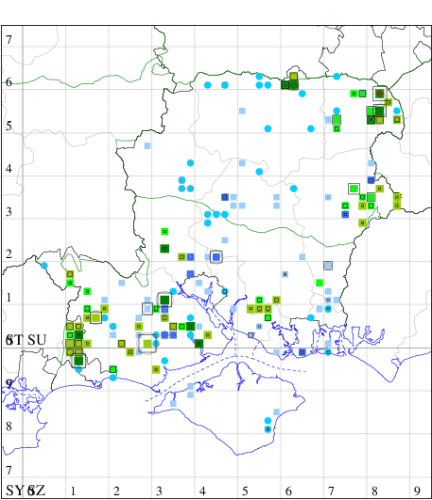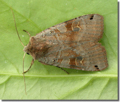Dotted Clay
Xestia baja
Checklist Number73.353 [B&F: 2130]
Verification
Record will normally be accepted but photo evidence may be required - check with CMR if not sure of identity
Common in woodland, heathland, scrubby grassland and marshes throughout the British Isles. In Hampshire widely distributed, but not particularly common and generally absent from the chalk. Not recorded from the Isle of Wight since 1982. Wingspan 38-44 mm. Combination of general appearance and two black dots close to apex of forewing is distinctive. Larva feeds on herbaceous plants such as Primrose, Stinging Nettle and Dock in autumn, and woody plants such as Blackthorn, Bog-myrtle and Willow in spring.


The abundance in each month is indicated as follows:
 No records
No records Very occasional
Very occasional Irregular
Irregular Uncommon
Uncommon Off-peak, but not unusual
Off-peak, but not unusual Off-peak, but not unusual
Off-peak, but not unusual Main flight time
Main flight time| J | F | M | A | M | J | J | A | S | O | N | D | |
|---|---|---|---|---|---|---|---|---|---|---|---|---|
| Adult |  |  |  |  |  |  |  |  |  |  |  |  |
| Larval |  |  |  |  |  |  |  |  |  |  |  |  |


